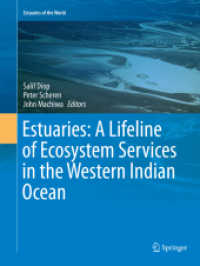基本説明
言語教育の理論と実践をつなぐ第二言語習得(SLA)の分野では今、何がわかっているのか?今後の課題は何か?斯界の第一人者Susan M. Gassの共編にて、第一線の研究者たちが全35章にわたって、心理言語学や神経言語学の知見から、スキル学習、学習環境、評価の実践まで、トピック別の概説を書き下ろす。今後のSLA研究に必携。
The Routledge Handbook of Second Language Acquisition brings togetehr 36 leading international figures in the field to produce a state-of-the-art overview of second language acquisition. The handbook covers: language in context, linguistic, psycholinguistic, and neurolinguistic theories and perspectives, skill learning, individual differences, L2 learning settings, and language assessment.
Full Description
The Routledge Handbook of Second Language Acquisition brings together fifty leading international figures in the field to produce a state-of-the-art overview of Second Language Acquisition.
The Handbook covers a wide range of topics related to Second Language Acquisition: language in context, linguistic, psycholinguistic, and neurolinguistic theories and perspectives, skill learning, individual differences, L2 learning settings, and language assessment. All chapters introduce the reader to the topic, outline the core issues, then explore the pedagogical application of research in the area and possible future development.
The Routledge Handbook of Second Language Acquisition is an essential resource for all those studying and researching Second Language Acquisition.
Contents
Section 1: Language in Context 1. Interactionist approach 2. The role of Feedback 3. Variationist perspectives 4. Sociocultural theory 5. Complexity theory/emergentism Section 2: Linguistic Perspectives Part One: Language Form 6. Phonology 7. L2 Morphosyntax/Syntax Part Two: Meaning 8.Semantics 9. Pragmatics 10. Vocabulary Section 3. Psycholinguistic and neurolinguistic perspectives 11. Processing 12. Frequency-based accounts13. Competition model 14. Processability theory 15. Noticing/attention/awareness 16. Input processing 17. Neurolinguistics Section 4. Skill Learning 18. L2 reading 19. L2 writing 20. L2 speech production 21. L2 speech perception 22. Oral versus written production Section 5. Individual Differences 23. Aptitude 24. Motivation 25. Issues of identity 26. Working memory 27. Language learning across the lifespan 28. Educational level 29. Attrition/fossilization 30. Heritage language learners 31. Advanced language proficiency Section 6. The Setting for Learning 32. Learning in a second language setting (study abroad) 33. Classroom research including SL and FL environments Section 7. Assessment of L2 knowledge 34. Learning through technology 35.Assessing learner knowledge








